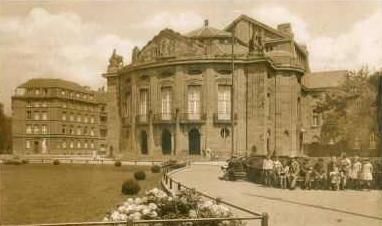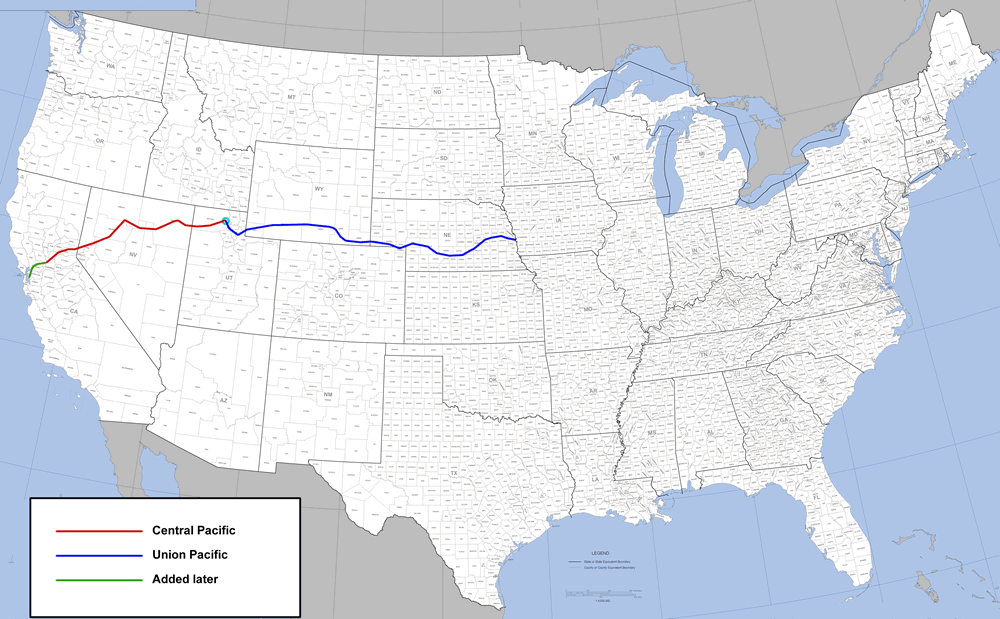|
Carl Moritz
Carl Moritz (27 April 1863 – 23 August 1944) was a German architect and real-estate entrepreneur. Based in Cologne, he built the Cologne opera house of 1902, and various banks, theatres and churches in Germany. Career Born in Berlin, Moritz studied architecture at the Technische Hochschule Charlottenburg. In 1894 he began his career as an independent architect in Berlin; the same year he took a study trip to England, one year later to Italy. From 1896 to 1898 he was inspector at the municipal building department in Cologne, after which he worked there as a freelance architect. He founded eight architectural firms or companies in Cologne in the 1930s, working closely with the architects Albert Betten and Werner Stahl. In 1934 he retired and settled on Lake Starnberg, where he died in Berg, part of Starnberg. A large part of his work involved bank building; during his career, Moritz designed about 40 banks, mostly for the Barmer Bank Corporation, for whom he worked ... [...More Info...] [...Related Items...] OR: [Wikipedia] [Google] [Baidu] |
Berlin
Berlin is Capital of Germany, the capital and largest city of Germany, both by area and List of cities in Germany by population, by population. Its more than 3.85 million inhabitants make it the European Union's List of cities in the European Union by population within city limits, most populous city, as measured by population within city limits having gained this status after the United Kingdom's, and thus London's, Brexit, departure from the European Union. Simultaneously, the city is one of the states of Germany, and is the List of German states by area, third smallest state in the country in terms of area. Berlin is surrounded by the state of Brandenburg, and Brandenburg's capital Potsdam is nearby. The urban area of Berlin has a population of over 4.5 million and is therefore the most populous urban area in Germany. The Berlin/Brandenburg Metropolitan Region, Berlin-Brandenburg capital region has around 6.2 million inhabitants and is Germany's second-largest metropolitan reg ... [...More Info...] [...Related Items...] OR: [Wikipedia] [Google] [Baidu] |
Stadttheater Düren
Stadttheater Düren was a theatre in Düren, North Rhine-Westphalia, Germany. The house was built from 1905 to 1907 to a design by Carl Moritz, the architect of the opera house in Cologne, on what is now the Hoeschplatz. A Düren businessman, Eberhard Hoesch, had donated 500,000 Marks for a new theatre; until then performances had been held at inns. After only 14 months of construction, the theatre opened on 17 January 1907. The house in Jugendstil style seated 700 people. The theatre had no permanent ensemble but housed visiting performances, including by actors Willy Birgel, Paul Henckels and Asta Nielsen, pianist Elly Ney and conductor Herbert von Karajan. The theatre was destroyed by bombing in World War II World War II or the Second World War, often abbreviated as WWII or WW2, was a world war that lasted from 1939 to 1945. It involved the World War II by country, vast majority of the world's countries—including all of the great power ... on 16 November 1944 ... [...More Info...] [...Related Items...] OR: [Wikipedia] [Google] [Baidu] |
1944 Deaths
Events Below, the events of World War II have the "WWII" prefix. January * January 2 – WWII: ** Free French General Jean de Lattre de Tassigny is appointed to command French Army B, part of the Sixth United States Army Group in North Africa. ** Landing at Saidor: 13,000 US and Australian troops land on Papua New Guinea, in an attempt to cut off a Japanese retreat. * January 8 – WWII: Philippine Commonwealth troops enter the province of Ilocos Sur in northern Luzon and attack Japanese forces. * January 11 ** President of the United States Franklin D. Roosevelt proposes a Second Bill of Rights for social and economic security, in his State of the Union address. ** The Nazi German administration expands Kraków-Płaszów concentration camp into the larger standalone ''Konzentrationslager Plaszow bei Krakau'' in occupied Poland. * January 12 – WWII: Winston Churchill and Charles de Gaulle begin a 2-day conference in Marrakech. * January 14 – WWII: Sovi ... [...More Info...] [...Related Items...] OR: [Wikipedia] [Google] [Baidu] |
1863 Births
Events January–March * January 1 – Abraham Lincoln signs the Emancipation Proclamation during the third year of the American Civil War, making the abolition of slavery in the Confederate states an official war goal. It proclaims the freedom of 3.1 million of the nation's four million slaves and immediately frees 50,000 of them, with the rest freed as Union armies advance. * January 2 – Lucius Tar Painting Master Company (''Teerfarbenfabrik Meirter Lucius''), predecessor of Hoechst, as a worldwide chemical manufacturing brand, founded in a suburb of Frankfurt am Main, Germany. * January 4 – The New Apostolic Church, a Christian and chiliastic church, is established in Hamburg, Germany. * January 7 – In the Swiss canton of Ticino, the village of Bedretto is partly destroyed and 29 killed, by an avalanche. * January 8 ** The Yorkshire County Cricket Club is founded at the Adelphi Hotel, in Sheffield, England. ** American Civil War &nd ... [...More Info...] [...Related Items...] OR: [Wikipedia] [Google] [Baidu] |
Bernhard Sehring
Ernst Bernhard Sehring (1 June 1855 in Edderitz, Anhalt – 27 December 1941) was a German architect. Life Sehring came from a petty-bourgeois village background and was the son of a Dessau construction foreman. He was boarded by Professor Happach and attended the Gymnasium (school), Gymnasium and the Kunstschule in Dessau. From 1873 until 1875, he studied at the Technische Universität Braunschweig, then architecture four semesters at the Berlin Bauakademie. During his studies he became a member of the . In 1877/1878, he was a trainee with the architect Karl Hoene in Halle (Saale). Sehring completed his year of military service as a one-year volunteer in 1878/1879. He undertook a study trip to Italy in 1879/1880 to observe the theatre architecture and garden architecture there. Shortly after he was accepted into the , he received the , his first architectural award, in 1882 for his designs for the Museum Island. In 1883, he received the Großer Akademischer Staatspreis. As a ... [...More Info...] [...Related Items...] OR: [Wikipedia] [Google] [Baidu] |
Deutsche Bauzeitung
''Deutsche Bauzeitung'' (stylized as ''db deutsche bauzeitung'') is the oldest technical architecture publication periodical in Germany. The magazine was established in 1867. Its headquarters is in Leinfelden-Echterdingen. The publisher is Konrad Medien GmbH. The magazine targets both architects and civil engineers This list of civil engineers is a list of notable people who have been trained in or have practiced civil engineering. A B C D E F G H I J K L M N O P Q R S T U .... References External links * * 1867 establishments in Germany Visual arts magazines published in Germany German-language magazines Magazines established in 1867 Engineering magazines {{architecture-mag-stub ... [...More Info...] [...Related Items...] OR: [Wikipedia] [Google] [Baidu] |
Münster
Münster (; nds, Mönster) is an independent city (''Kreisfreie Stadt'') in North Rhine-Westphalia, Germany. It is in the northern part of the state and is considered to be the cultural centre of the Westphalia region. It is also a state district capital. Münster was the location of the Anabaptist rebellion during the Protestant Reformation and the site of the signing of the Treaty of Westphalia ending the Thirty Years' War in 1648. Today it is known as the bicycle capital of Germany. Münster gained the status of a ''Großstadt'' (major city) with more than 100,000 inhabitants in 1915. , there are 300,000 people living in the city, with about 61,500 students, only some of whom are recorded in the official population statistics as having their primary residence in Münster. Münster is a part of the international Euregio region with more than 1,000,000 inhabitants ( Enschede, Hengelo, Gronau, Osnabrück). History Early history In 793, Charlemagne sent out Ludger ... [...More Info...] [...Related Items...] OR: [Wikipedia] [Google] [Baidu] |
Katowice
Katowice ( , , ; szl, Katowicy; german: Kattowitz, yi, קאַטעוויץ, Kattevitz) is the capital city of the Silesian Voivodeship in southern Poland and the central city of the Upper Silesian metropolitan area. It is the 11th most populous city in Poland, while its urban area is the most populous in the country and one of the most populous in the European Union. Katowice has a population of 286,960 according to a 31 December 2021 estimate. Katowice is a central part of the Metropolis GZM, with a population of 2.3 million, and a part of a larger Upper Silesian metropolitan area that extends into the Czech Republic and has a population of 5-5.3 million people."''Study on Urban Functions (Project 1.4.3 ... [...More Info...] [...Related Items...] OR: [Wikipedia] [Google] [Baidu] |
Silesian Theatre
Silesian Theatre ( pl, Teatr Śląski) dedicated to Stanisław Wyspiański is the largest theatre in Silesia. It is located on the market square in Katowice Katowice ( , , ; szl, Katowicy; german: Kattowitz, yi, קאַטעוויץ, Kattevitz) is the capital city of the Silesian Voivodeship in southern Poland and the central city of the Upper Silesian metropolitan area. It is the 11th most populo .... It was built as "German Theatre" in the years 1905–1907, from plans by German theatre architect Carl Moritz. In the interwar Poland from 1922 to 1939 it was known as the "Polish Theatre". References External links Homepage Theatres completed in 1907 Buildings and structures in Katowice Theatres in Katowice Tourist attractions in Silesian Voivodeship 1907 establishments in Germany {{Europe-theat-stub ... [...More Info...] [...Related Items...] OR: [Wikipedia] [Google] [Baidu] |
Stralsund Theatre
The Stralsund Theatre (german: Stralsunder Theater) in the German town of Stralsund has a long tradition. Performances of theatre pieces on the ''Alter Markt'' are documented in the years 1553 (''"Tragedie van deme Daniel"'') and 1584 (''"De Tragedien van Susannen"''). The present building was designed by Carl Moritz Carl Moritz (27 April 1863 – 23 August 1944) was a German architect and real-estate entrepreneur. Based in Cologne, he built the Cologne opera house of 1902, and various banks, theatres and churches in Germany. Career Born in Berlin, ... and opened in 1914. The tradition has continued since the merger of the theatres of the towns of Stralsund and Greifswald in 1994 into the Theatre of West Pomerania ('). External links Official web presence of theatres in West PomeraniaBaltic Sea Festivals in Stralsund & GreifswaldConversion of Stralsund Theatre(photographs, construction history, drawings) Stralsund Theatre in Germany Culture of Mecklenburg-We ... [...More Info...] [...Related Items...] OR: [Wikipedia] [Google] [Baidu] |







